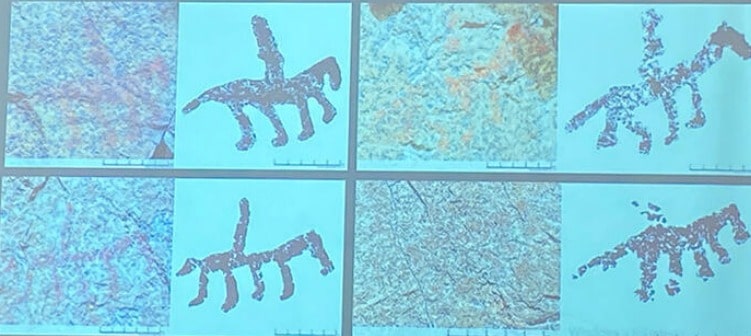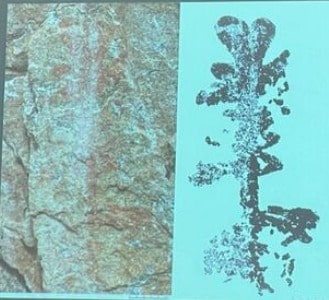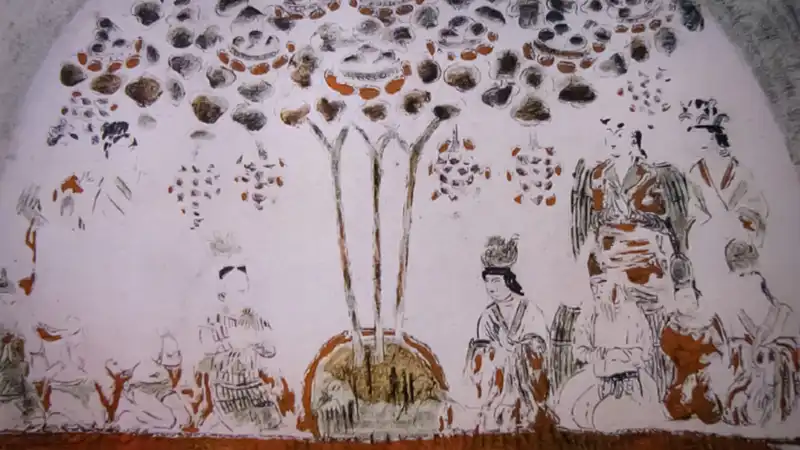
3,000-year-old rock rare paintings have discovered in Rize
Archaeologists have discovered approximately 3,000-year-old rock paintings believed to belong to the Bozkurt tribes during their surface survey.
The discovery happened in the İkizdere district of Rize province, Turkey.
Associate Professor Dr. Okay Pekşen, Head of the Ancient History Department at Ondokuz Mayıs University, stated, “We saw approximately 3,000-year-old rock paintings believed to belong to the Bozkurt tribes for the first time in the Black Sea region.”
The paintings are depicted on 4-meter-long rocks created using the painting technique.
📣 Our WhatsApp channel is now LIVE! Stay up-to-date with the latest news and updates, just click here to follow us on WhatsApp and never miss a thing!!
The images portray four unarmed horsemen and symbols of the Tree of Life, which hold significant importance in Turkish culture.

The rock paintings were seen for the first time in the Black Sea region
Doç. Dr. Okay Pekşen stated, “We saw rock paintings made using the painting technique for the first time in the Black Sea region. There are examples near Artvin that were made using the scratching method. Rock paintings are generally made using three styles: painting, pecking, and scratching.”
“The paintings made with the painting style are one of the rarest examples worldwide because they can quickly deteriorate and fade when exposed to climatic conditions. Due to this reason, they are not commonly found. The rock paintings we found in the region are the first known examples in the Black Sea region. Similar examples in Anatolia are found not in the open air but in caves. Apart from that, we come across rock paintings with different styles from Kazakhstan to Azerbaijan and beyond.”
The Tree of Life in Turkish culture.
The Tree of Life is an important symbol in various Turkish tribes’ mythologies and traditions. This symbol represents the infinity of life and nature, with its roots reaching underground and its branches extending towards the sky, thus showing the interconnectedness of the world and the cosmos. In different periods of Turkish mythology and culture, the Tree of Life has appeared in various forms and names.
Tree of Ulgen, the Sky God: In some Turkish tribes like the Altai Turks and Yakuts, the sacred tree of the sky god Ulgen is believed to be located at the center of the cosmos and extends above the world. This tree is considered a sacred symbol that maintains the order and balance of the universe.

Tengri’s Walnut: In ancient Turkish culture, the walnut of the sky god Tengri was regarded as the Tree of Life. The branches of this walnut tree reached the sky and stars, while its fruits provided nourishment to the souls of humans and animals.
Kam Tree: Among the Altai Turks, the Kam tree is considered the Tree of Life. Rituals are performed on this tree to communicate with spirits and seek assistance.
Sky Walnut Tree: Among some Turkish tribes like the Bashkirs and Tatars, the sky walnut tree is considered a sacred symbol and is used in various rituals.
The Tree of Life holds a significant place in Turkish folk beliefs and traditions. It symbolizes the power, infinity, and connection of nature while representing the bonds between people, ancestors, and future generations. Even today, traces of this symbol and its usage continue in various artistic and religious activities in Turkish culture.
You may also like
- A 1700-year-old statue of Pan unearthed during the excavations at Polyeuktos in İstanbul
- The granary was found in the ancient city of Sebaste, founded by the first Roman emperor Augustus
- Donalar Kale Kapı Rock Tomb or Donalar Rock Tomb
- Theater emerges as works continue in ancient city of Perinthos
- Urartian King Argishti’s bronze shield revealed the name of an unknown country
- The religious center of Lycia, the ancient city of Letoon
- Who were the Luwians?
- A new study brings a fresh perspective on the Anatolian origin of the Indo-European languages
- Perhaps the oldest thermal treatment center in the world, which has been in continuous use for 2000 years -Basilica Therma Roman Bath or King’s Daughter-
- The largest synagogue of the ancient world, located in the ancient city of Sardis, is being restored











Leave a Reply